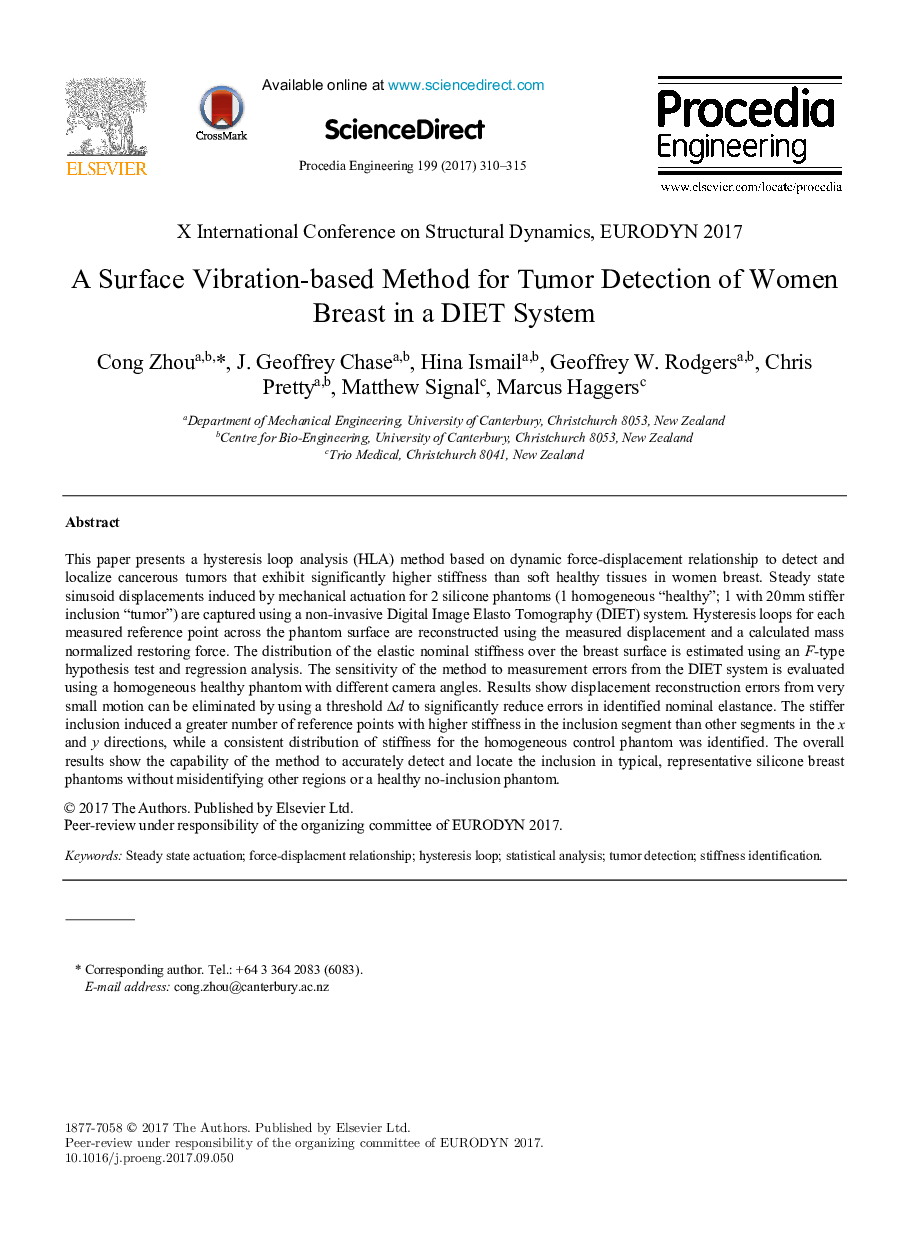| Article ID | Journal | Published Year | Pages | File Type |
|---|---|---|---|---|
| 5026780 | Procedia Engineering | 2017 | 6 Pages |
Abstract
This paper presents a hysteresis loop analysis (HLA) method based on dynamic force-displacement relationship to detect and localize cancerous tumors that exhibit significantly higher stiffness than soft healthy tissues in women breast. Steady state sinusoid displacements induced by mechanical actuation for 2 silicone phantoms (1 homogeneous “healthy”; 1 with 20mm stiffer inclusion “tumor”) are captured using a non-invasive Digital Image Elasto Tomography (DIET) system. Hysteresis loops for each measured reference point across the phantom surface are reconstructed using the measured displacement and a calculated mass normalized restoring force. The distribution of the elastic nominal stiffness over the breast surface is estimated using an F-type hypothesis test and regression analysis. The sensitivity of the method to measurement errors from the DIET system is evaluated using a homogeneous healthy phantom with different camera angles. Results show displacement reconstruction errors from very small motion can be eliminated by using a threshold âd to significantly reduce errors in identified nominal elastance. The stiffer inclusion induced a greater number of reference points with higher stiffness in the inclusion segment than other segments in the x and y directions, while a consistent distribution of stiffness for the homogeneous control phantom was identified. The overall results show the capability of the method to accurately detect and locate the inclusion in typical, representative silicone breast phantoms without misidentifying other regions or a healthy no-inclusion phantom.
Related Topics
Physical Sciences and Engineering
Engineering
Engineering (General)
Authors
Cong Zhou, J. Geoffrey Chase, Hina Ismail, Geoffrey W. Rodgers, Chris Pretty, Matthew Signal, Marcus Haggers,
